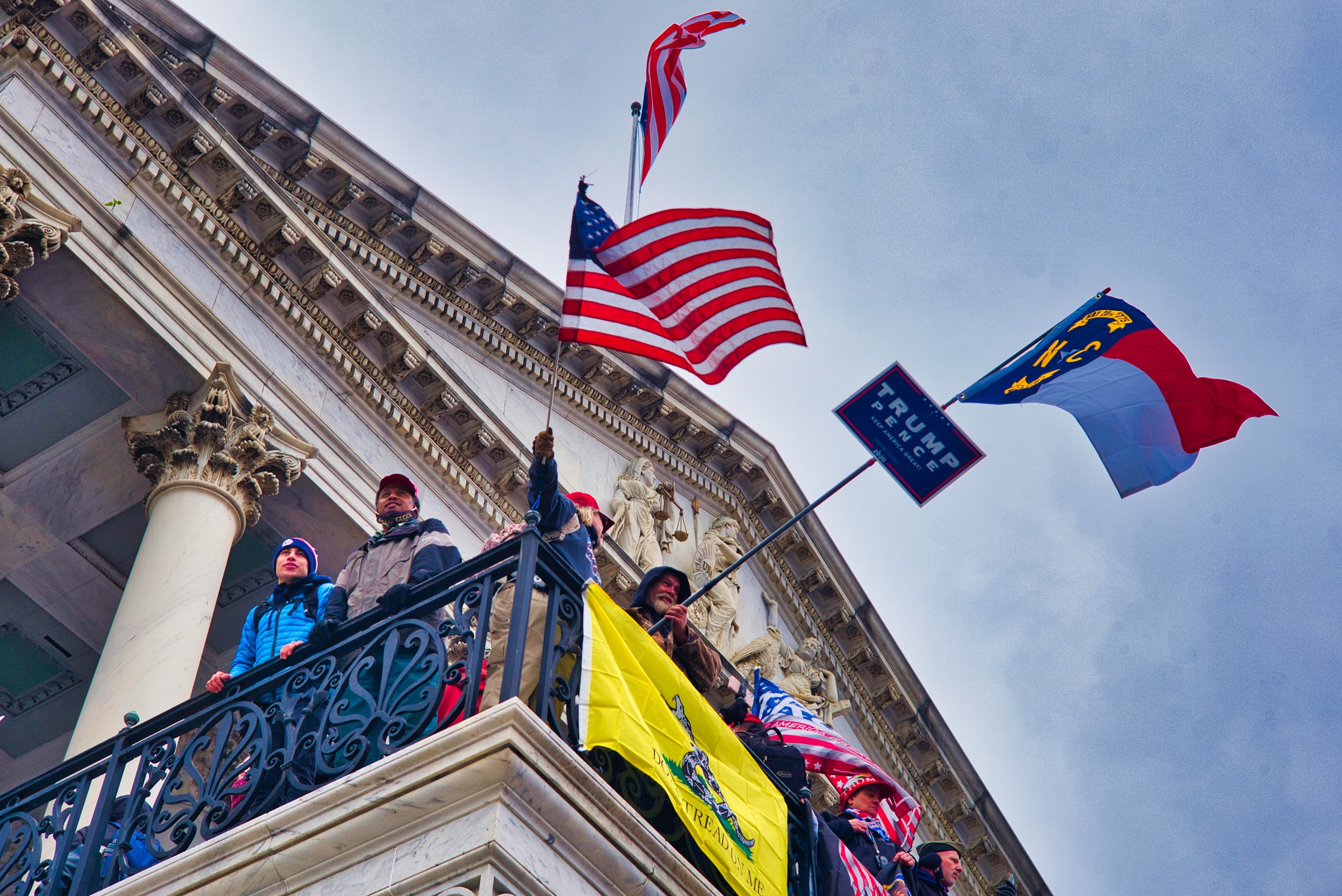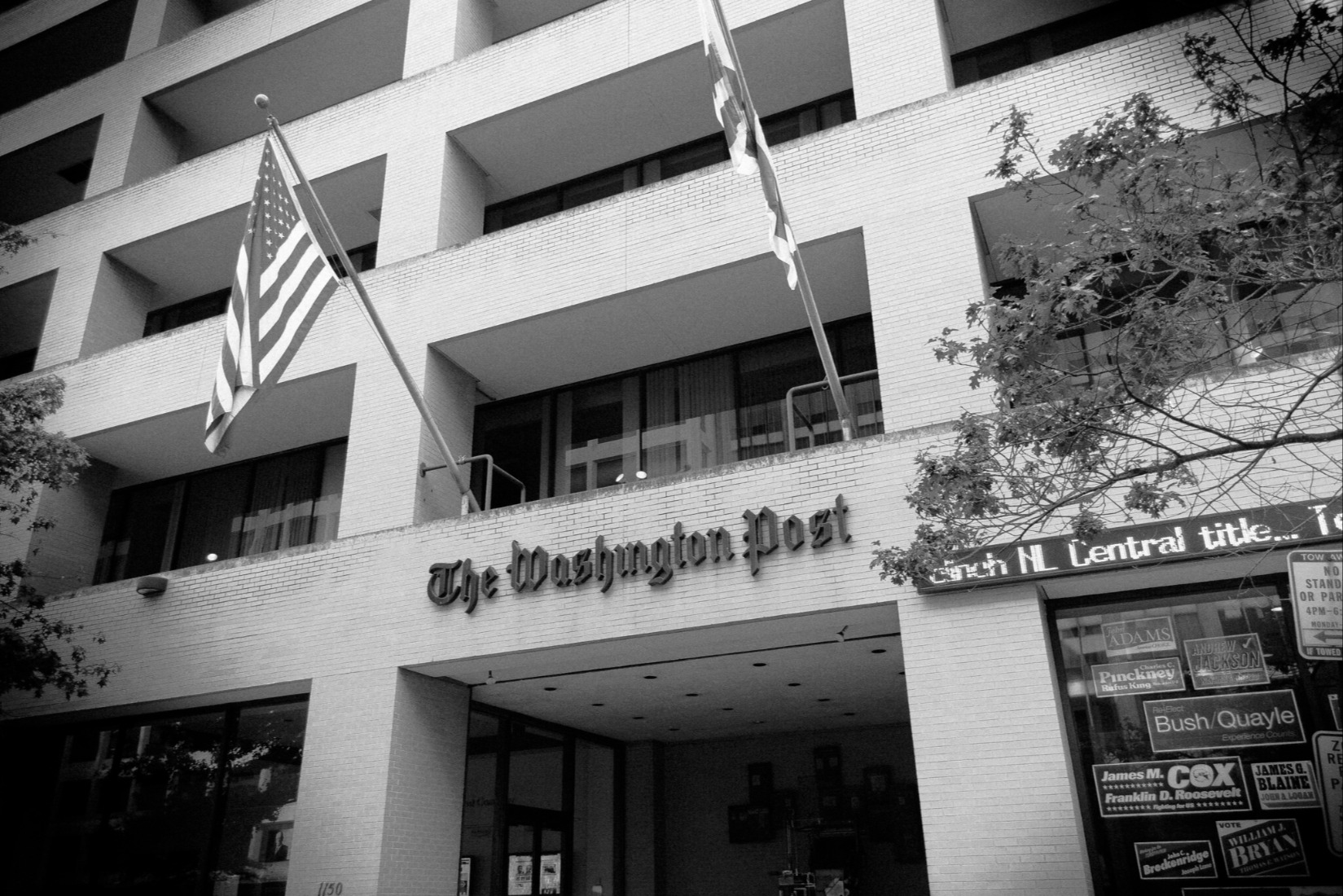The 14th Amendment’s Disqualification Provision and the Events of Jan. 6
Section 3 of the 14th Amendment is the best legal framework available for addressing the extraordinary events at the Capitol with respect to the eligibility of participants to hold public office.

Published by The Lawfare Institute
in Cooperation With

Before the violence at the Capitol, Section 3 of the 14th Amendmentwas one of the most obscure parts of the Constitution. Ratified shortly after the Civil War, Section 3 was designed to prevent current and former U.S. military officers, federal officers and state officials who served the Confederacy from serving again in public office unless their disability was removed by at least a two-thirds vote of each house of Congress. Section 3 was enforced for a few years at the federal and state levels, but in 1872 the necessary supermajorities in Congress granted an amnestyto most of the men who were barred from office.
Now Section 3 is back in the news because of its declaration that officials who swore an oath to defend the Constitution and then “shall have engaged in insurrection or rebellion against” the United States are ineligible to serve in office again. This raises the significant question of whether President Trump and other individuals who played some part in the events surrounding the Jan. 6 attack on the Capitol are now ineligible from future service. A review of the basic parameters of Section 3 suggests it is the best legal framework available for addressing the extraordinary events at the Capitol with respect to the eligibility of participants to hold public office.
The Key Questions
The first question under Section 3 is who decides whether someone is ineligible. The answer is that a court must determine if someone outside of Congress is subject to the disability. This point was established in cases between 1868 and 1872, in which men who were accused of being ineligible contested that claim in court with full due process of law. In this respect, Section 3 is different from a disqualificationfrom federal office imposed as a sentence for an impeachment conviction. A disqualification sentence from the Senate is final and not, for all intents and purposes, subject to judicial review.
By contrast, Congress cannot simply declare an official outside of that body ineligible under Section 3 without the concurrence of the courts. To hold otherwise would allow simple majorities in Congress to oust federal and state officials without judicial scrutiny and would subvert long-established constitutional principles, such as life tenure for federal judges and the limits of the impeachment process. At most, Congress can exercise its Section 5enforcement authority under the 14th Amendment to express its considered opinion that certain individuals are ineligible, with the expectation that the courts will accept that opinion under the “congruence and proportionality” standard articulated by the Supreme Court’s decision in City of Boerne v. Flores—assuming that City of Boerne even applies to the enforcement of Section 3.
With respect to sitting members of Congress, Section 3 must be enforced internally, because the Constitution contemplates no other disciplinary process. The most obvious enforcement mechanism is expulsion, which can be done for virtually any reason with a two-thirds vote. During Reconstruction and on one occasion during World War I, Congress enforced Section 3 by refusing to seat members-elect who were deemed ineligible. In Reconstruction, the issue was that these members-elect were involved with the Confederacy. During World War I, the member-elect was convicted under the Espionage Act—a conviction that was later reversed on appeal.
Whether Congress can by a majority vote exclude a sitting member on Section 3 grounds is doubtful. The issue turns on whether Section 3 is viewed as an eligibility requirement (comparable to age or citizenship) or as a punishment. Under the Supreme Court’s decision in Powell v. McCormack, eligibility requirements permit exclusion by a majority vote, while all other grounds must be addressed through expulsion and a two-thirds vote. The Supreme Court expressly declined in Powellto decide which of these categories applied to Section 3. On balance, I believe that the Court would hold that Section 3 may be enforced against a sitting member of Congress only through expulsion, largely because the two-thirds requirement for expulsion is an important safeguard against partisan abuses.
Second, there is the question of whether Section 3 is self-enforcing. The answer is probably not. In 1869, Chief Justice Salmon P. Chase issued a circuit opinionholding it was not. This opinion was not well reasoned, as I explain in my paperon Section 3, and might not be followed by the current Supreme Court. But, then again, the court might come to the same conclusion today.
Congress enacted Section 3 enforcement legislationin 1870 that authorized the Department of Justice to bring quo warranto actions—a common-law writ asking, “by what warrant” does someone lawfully hold office—to oust from office some ineligible officials. But Congress repealed this statute in the 1940s as part of a broad cleanup of “obsolete” provisions. If Chase was right, then Congress would be well advised to enact new Section 3 enforcement legislation. The quo warranto provision of the 1870 Ku Klux Klan Act could be reinstated with some adjustments. For example, the act authorized actions against ineligible officials, not ineligible candidates. There are instances, though, where enforcement should be authorized before elections are held so as to resolve ex ante any uncertainty about whether someone can serve.
Third, a presidential pardon cannot cure Section 3 ineligibility. This conclusion rests on the text of the amendment, which permits only a supermajority in both houses of Congress to grant an exemption, and on the original public meaning of Section 3. During the debate on the 14th Amendment in the 39th Congress, the Senate rejected a proposed amendment to Section 3 that would have made an exception for presidential pardons. This rejection was made against the backdrop of Congress’s bitter fight with President Andrew Johnson over Reconstruction, which supports the argument that Congress intended to make Section 3 an exception to the president’s pardon power. In the 1880s, the attorney general issued an opinion stating that pardons Johnson gave to individuals before the 14th Amendment was ratified did cure their Section 3 ineligibility, but the implication was that subsequent pardons did not.
So what does it mean to be “engaged in insurrection or rebellion” under the language of Section 3? There are some clues about what “engaged” means. When Congress addressed claims that members-elect were ineligible under Section 3, the facts in each case were examined carefully. In some instances, the member-elect was excluded and in others he was not. Extracting a general principle from these few examples, though. is difficult. Another insight comes from the only reported criminal caseon Section 3, in which a jury was instructed that a “voluntary” act was required to engage in insurrection.
The harder question is what constitutes an “insurrection,” a point on which I have thus far been unable to find any particularly helpful authority. During the 1860s and 1870s, everyone understood that the insurrection in question was the Confederacy, and no thought was given to what other insurrections might look like. The Insurrection Act, passed in the wake of Aaron Burr’s alleged conspiracy in 1807, was on the books when Section 3 was ratified. But the Burr trial was about treason, not insurrection, and thus supplies no useful guidance.
Section 3 and Jan. 6
With this limited background in mind, let us turn to the application of Section 3 to the violence at the Capitol on Jan. 6. Almost immediately after the riot, members of Congress on both sides of the aisle described the violence as an insurrection. Why was that? The most logical answer is that the violence was intended to disrupt a constitutionally mandated process—the 12th Amendment’s electoral vote count—for the formal recognition of the presidential election results. In other words, this was not just a violent attack upon Congress, as bad as that would be. The mob was seeking to halt or overturn a core constitutional function at the seat of government, which can reasonably be described as an attempt to replace law with force. The criminal charges subsequently brought against the people who entered the Capitol also indicate that some of them intended to inflict bodily harm on members of Congress, which can be reasonably understood as a direct attack on the legislative branch itself and, more generally, the existing government. Notably, federal prosecutors described the riotas a “violent insurrection” in at least one recent court filing.
What’s more, the article of impeachmentadopted against President Trump by the House of Representatives expressly describes what occurred as an insurrection and cites Section 3. In a Section 3 case, courts will probably defer to this conclusion, especially since the members of Congress were direct witnesses to the event. An acquittal of Trump in the impeachment trial may undercut that deference somewhat, but not fully.
Section 3 enforcement within Congress does not require judicial involvement, and thus members of that body could be punished simply if a house of Congress were to conclude that an insurrection occurred and that some members “engaged in insurrection.”
That said, the case for saying that members of Congress are ineligible under Section 3 and deserve expulsion is not strong based on what is now known, though more facts may be forthcoming. Simply voting to reject the certification of some electoral votes (or speaking to explain those votes) under the procedures set forth by the Electoral Count Actis not sufficient. The Speech and Debate Clauseshould be construed to immunize these actions from an extreme sanction like expulsion. Moreover, these members were participating in a long-established legal process and making their voices heard in protest, as others have in the past. They were not breaking the rules. One member of the House of Representatives, Mo Brooks, was at the rally that preceded the riot and spoke at that rally—and Rep. Brooks might have a Section 3 problem depending on how his words are parsed and whether inciting an insurrection is tantamount to engaging in one. But even if there is insufficient evidence for expulsion, a house of Congress could still discipline one of its members through a reprimand or censure based on Section 3 that would, in effect, refer the eligibility question to the voters.
To be sure, allegations that individual members actively participated in the violence—through their private communications, through public disclosures of the location of members during the incursion, or by giving participants reconnaissancetours of the Capitol in advance—could change the calculation concerning individual members. The key point for present purposes is that without more, merely opposing the certification of electoral votes should not result in expulsion under Section 3.
The actual members of the mob who stormed the Capitol present a more straightforward case. According to press reports, some of the rioters were state officials. They would be barred from serving, now and in the future. Congress probably needs to enact enforcement authority to implement Section 3’s command, though state legislatures could impose their own discipline on state legislators and state law could be used in some cases to enforce Section 3 for state officials.
Likewise, some former military officers were apparently also presentin the mob. The text and history of Section 3 make plain that former or current military officers are subject to exclusion from office if they engage in insurrection. Thus, these officers would almost certainly share the same fate as the state officials in the mob if they ever sought civil office—again, assuming that enforcement authority is available.
The president presents the most challenging example. Further investigation may reveal more about his actions before and during the violence. Whatever those facts disclose, some of the legal issues are clear. First, there is no federal statutory enforcement authority for Section 3 of the 14th Amendment. Without congressional action on that front, the ex-president could argue—if he runs for office again and is denied ballot access in a state—that Section 3 may not be applied to him, relying on Chief Justice Chase’s reasoning. State election statutes may refer to the federal constitutional requirements for eligibility to serve as president, but they may not refer to Section 3 specifically. I am unsure about what the law in each state says on this question.
Further, the ex-president can contest any Section 3 ineligibility claim in court, no matter what Congress does. This is because, as noted above, a concurrent resolution by Congress or a statute declaring someone ineligible under Section 3 does not make that person ineligible. Congress can only express its opinion on that constitutional point, backed by any record it might assemble, and expect deference from the courts. But expecting is not the same as guaranteeing. The former president could argue, for instance, that what occurred at the Capitol was not an insurrection, that his role in that event does not mean that he was “engaged in insurrection,” or that the presidency is a unique office that is simply not covered by Section 3.
There is a significant advantage to using Section 3 instead of impeachment as the means to bar the president from serving another term in office: There can be a fair process in court. Congress can further that goal in a new enforcement statute by creating a special procedure to address Section 3 claims. For example, perhaps a three-judge federal district court should hear the case rather than a single district judge. The forthcoming impeachment trial, by contrast, may be a lengthy televised free-for-all that will only make matters worse. And at the end of the day, if there is an acquittal in the Senate, the country will be right back at square one.
Some scholars have raised the question of whether a joint resolution of Congress declaring the president ineligible would be an unconstitutional bill of attainder. But the due process available in a Section 3 case addresses this concern. Unlike a typical bill of attainder, such a joint resolution would not bind the courts. Thus, one of the principal criticisms of a bill of attainder—that there is a conviction without a trial—would not apply.
Furthermore, several members of the 39th Congress raised the criticism that Section 3 was incompatible with the Attainder Clause, and their objections were rejected. Lastly, it is unclear whether Section 3 will be construed as a punishment or as an eligibility requirement, though the question is a fairly close one. If it is just an eligibility requirement, then that removes the subject even further from a classic bill of attainder, which involves criminal liability.
There is another benefit of using Section 3. If the former president decides to run again, he would be subject to ordinary judicial process and could be compelled to testify under oath—and penalty of perjury—about his actions on Jan. 6, 2021, in an appropriate forum. This would either act as a deterrent to a future candidacy or compel the disclosure of additional details that will inform the public. An impeachment trial, by contrast, is ill suited to a careful examination of facts and will probably be used instead for speeches and grandstanding that will shed more heat than light. Moreover, some of the judges involved in a Section 3 case will be people appointed to the bench by Trump himself, which should help alleviate concerns about bias or a political vendetta.
Congress could turn to Section 10 of the Voting Rights Act of 1965as one model for a concurrent resolution or a statute regarding Trump and Section 3. Section 10(a) made factual findings and then stated Congress’s conclusion that poll taxes in state elections denied people their fundamental right to vote. Congress did not have the authority to simply prohibit poll taxes in state elections, which is why Section 10(a) was styled as a declaration of Congress’s opinion rather than as a command. The rest of Section 10 established a judicial process for assessing Congress’s constitutional declaration and directed the attorney general to seek declaratory and injunctive relief against poll taxes in state elections pursuant to that process. The courts were then left to decide if Congress’s conclusion about state poll taxes was accurate, and the Supreme Court ultimately held that Congress was correct in Harper v. Virginia Board of Elections.
The Voting Rights Act, of course, was a statute, rather than a concurrent resolution. Nonetheless, a concurrent resolution could accomplish many of the same goals, though by “encouraging” or “inviting” the attorney general to bring an action, rather than by directing him to do so. The enforcement procedure could then be put into whatever statute Congress might pass to reinstate Section 3 enforcement authority more generally. Or Congress could simply do everything with respect to the president in one standalone statute and copy Section 10 of the Voting Rights Act more directly.
The violent mob that carried the Confederate flaginto the Capitol, an invasion that Robert E. Lee never achieved, should be forced to confront the only constitutional provision that was specifically directed against those who helped carry that flag into battle—along with anyone who engaged in that insurrection with them.





